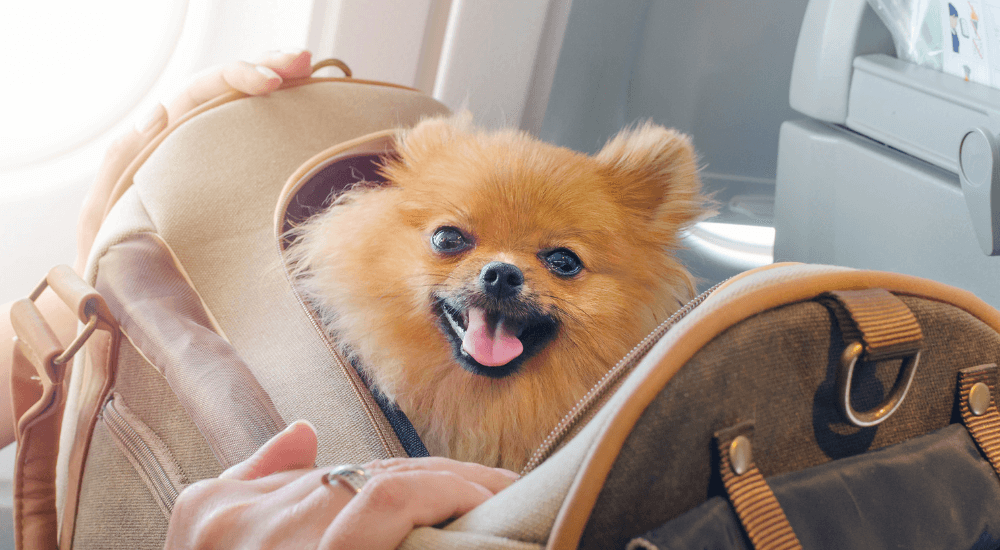People love to travel as a family, and when a pet is a beloved family member, no vacation would be complete without them. But traveling with a pet can be more complex than traveling with a human family member. Pets can’t tell us when they are jet lagged or uncomfortable, and unfamiliar places can be stressful for territorial animals like cats and dogs.
However, traveling with a pet can also be extremely rewarding. With only a few extra steps, you can ensure your pet is healthy and happy as you travel, and you enjoy making lifelong memories with your beloved pets.
1. Get a Pre-Trip Health Check
A trip to the veterinarian is always a good idea before any trip with your pet. Have your vet give your pet a full run down to ensure that they are in top health and fitness for any trip. Give your vet details of your plans so they can ensure your pet is healthy enough for the activities, particularly if you plan to do any physical activities like hiking or camping. Also, discuss feeding schedules and possible supplementary dog probiotics, particularly if changing time zones or flying.
Some airlines require a Certificate of Veterinary Inspection issued within 10 days of your departure. Ensure you follow all their regulations and that your dog has all vaccinations required at your destination. Also, check the airline rules about flying with pets during the summer if you are traveling internationally because there may be some restrictions.
2. Practice Traveling
Riding in a car or flying on an airplane can be a stressful experience for your pet, especially if your pet only associates car trips with going to the vet. Give your pet a head start by practicing traveling as much as possible.
If you are going on a road trip, take several progressively longer car trips with your pet. Get them used to the feelings, vibrations and sounds of travel. Take them someplace they love, like a park, so they have positive associations with the experience.
If you are planning to fly, practice having your pet sit in their traveling case for progressively longer periods. Ensure each time is a good experience by offering treats or non-food rewards, like verbal praise or a special pet toy.
3. Let Your Pet’s Personality Plan Your Trip
No one knows your pet like you do, and it is important to plan a travel itinerary that suits your pet’s personality. If you know your pet gets motion sick or likes to take frequent breaks to exercise, plan a slow, flexible road trip that can accommodate playtime along with travel.
If you know your pet is claustrophobic or easily stressed, avoid air travel, and if your pet does not like strangers, plan a trip somewhere with few people, like a national park or nature reserve.
It is essential to listen to your pet as well. If you know your pet is a homebody and is stressed by anything unfamiliar, you might need to travel without them and organize a pet sitter or a stay at the kennel.
4. Prepare Treats and Extra Food
One essential tip for traveling with any pet is over-packing food. Finding restaurants and supermarkets with human food can be challenging in some areas, but finding a pet store could be nearly impossible. Be sure to have more than enough of your pet’s regular pet food.
Hungry pets will be unhappy pets. Many parts of traveling, like moving between time zones or disruptions to their normal feeding schedule, could make your pet hungry and grumpy. If you have extra food on hand, you can always keep your pet well-fed and happy.
Pack lots of your pet’s favorite treats to reward good behavior and encourage positive habits. Shower your pet with chew toys, catnip, a meal of gently cooked dog food or whatever your pet loves.
5. Take Favorite Toys and Comforts from Home
Traveling to unfamiliar places can be stressful for your pet, but bringing a piece of home can help them adapt to changing circumstances. For some animals, it might be a favorite toy or blanket; for others, it might be their usual bed to sleep in.
These little pieces of their normal life can keep them distracted and calm on long rides and help them relax in a new, unfamiliar location at the end of the day.
When you practice traveling, test out different items from your home and see what gets the best response out of your pet. If your pet immediately sleeps under a special quilt or is pacified by a beloved chew toy, do not forget it when you travel.
6. Make Sure All Locations Are Pet Friendly
Before you travel, ensure that all your accommodations and transportation are pet friendly. If renting a car, thoroughly read the agency’s damage policy if your pet has an accident or damages part of the car.
If you are flying, read all the airline’s rules and regulations, particularly if you want to bring your pet to the cabin, which most airlines restrict to small dogs and cats only. If your pet is not traveling in the cabin, make sure you have an airline-approved carrier that your pet will be comfortable in for the flight, with enough insulation to keep them warm on the plane.
Check that your hotel has pet-friendly rooms available. Also, ensure that there is sufficient area for your pet to exercise, enough outdoor space for your pet to relax and space for your pet to use the bathroom. If pet-friendly spaces are communal, ensure your pet is properly socialized to ensure smooth interactions with other unfamiliar animals.
Prepare for a Wonderful Trip
Traveling with your pet can be an incredible experience you treasure for a lifetime. While it may be difficult or stressful, traveling with a pet can be highly rewarding, provided you prepare in advance, have plenty of supplies, and stay flexible with your plans.
With the right preparation, your pet will enjoy the adventure as much as you. Once you reach your destination, relax and enjoy the world with your pet.

